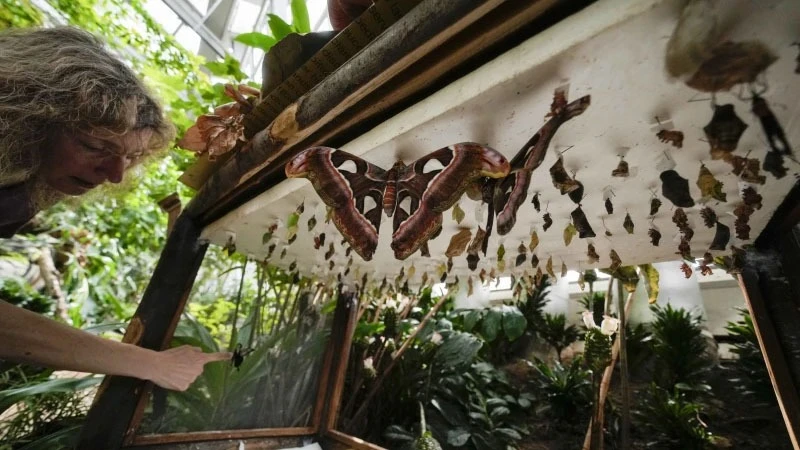
Italian Museum Recreates Tanzanian Forest to Advocate Biodiversity Research: The Butterfly Forest Project
By Fiona Nanna, ForeMedia News
5 minutes read. Updated 4:00AM GMT Mon, June 10, 2024
In the heart of Trento, Italy, lies a unique initiative shedding light on Tanzanian biodiversity research: the Butterfly Forest Project.
Italy’s Museo delle Scienze (MUSE) in Trento has recreated a slice of Tanzanian wilderness within its walls, drawing attention to critical environmental issues on a global scale.
Within the confines of a 600-square-meter forest enclosure, the spotlight falls on a vital yet fragile ecosystem element: butterflies. Various species, adorned in vibrant hues, flutter amidst verdant foliage, their pupae gently suspended as they metamorphose into adulthood within the museum’s greenhouse.
The inspiration behind this endeavor stems from the Udzungwa Mountains of south-central Tanzania, a region renowned for its rich biodiversity. Lisa Angelini, the director of MUSE’s greenhouse, explains that this project serves as a tangible link to MUSE’s ecological monitoring center nestled within the Udzungwa Mountains National Park, established in collaboration with Tanzania National Parks back in 2006.
The forest replica in Trento serves as a poignant reminder of the ongoing research and conservation initiatives underway in the Tanzanian wilderness. It seeks to raise public awareness regarding the threats faced by global biodiversity, such as deforestation and climate change.
Deforestation, a pressing concern worldwide, disrupts habitats, leading to the decline of essential nectar sources for butterflies and hindering their natural movements, ultimately endangering vulnerable species. The repercussions extend beyond butterflies, impacting entire ecosystems and food chains.
The scientists spearheading the Butterfly Forest project aspire to not only deepen our understanding of butterfly communities but also to inspire conservation strategies tailored to specific habitats. By leveraging butterflies as indicators of biodiversity health, they hope to mitigate the adverse effects of habitat loss and climate change.
The immersive experience offered by MUSE’s tropical greenhouse transports visitors to the heart of the Eastern Arc Mountains, home to over 40 endemic butterfly species. This biodiverse haven, proposed as a UNESCO Heritage site, serves as a crucial laboratory for studying the impacts of climate change due to its minimal human interference.
Mauro Gobbi, an entomologist and researcher at MUSE, emphasizes the urgency of protecting insects from the ravages of climate change, underscoring their indispensable role in maintaining ecosystem balance.
As visitors meander through this verdant oasis, encompassing over 200 plant species and 13 animal species, including endemic flora and fauna from the Eastern Arc mountains, they are confronted with the imperative to safeguard our natural heritage. The challenge ahead lies in reshaping farming policies, preserving natural habitats, and fostering landscapes conducive to biodiversity conservation.
In the face of escalating biodiversity loss, the work undertaken by MUSE serves as a beacon of hope, illuminating the path towards a more sustainable future. Gobbi’s poignant reminder reverberates: the fate of butterflies mirrors our planet’s delicate ecological equilibrium, urging us to act decisively to safeguard our shared future.

